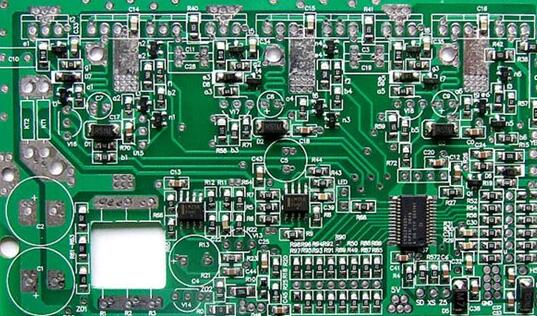The history of PCBA
The development history of PCBA should start from the United States. At that time, the invention only used copper paste on talc for wiring to make proximity communication tubes; later it was used by the military and not yet recognized. It wasn't until 1948 that the United States officially recognized this invention and used it for commercial purposes. Let's look at the detailed content of the development history of PCBA compiled for everyone by the editor.
In 1941, the United States painted copper paste on talc for wiring to make proximity communication tubes.
In 1943, the Americans used this technology extensively in military radios.
In 1947, epoxy resin began to be used for manufacturing substrates. At the same time, NBS began to study the manufacturing technology of forming coils, capacitors, resistors, etc. with printed circuit technology.
In 1948, the United States officially recognized this invention for commercial use.
Since the 1950s, transistors with lower heat generation have largely replaced vacuum tubes, and printed circuit board technology has only begun to be widely adopted. At that time, etching foil film technology was the mainstream.

In 1950, Japan used silver paint for wiring on glass substrates; and copper foil for wiring on phenolic resin-made paper phenolic substrates (CCL).
In 1951, the appearance of polyimide made the resin's heat resistance even further, and polyimide substrates were also produced.
In 1953, Motorola developed a double-sided board with electroplated through-hole method. This method is also applied to later multilayer circuit boards.
In the 1960s, 10 years after printed circuit boards were widely used, their technology became increasingly mature. Since Motorola's double-sided board came out, multilayer printed circuit boards began to appear, which increased the ratio of wiring to substrate area.
In 1960, V. Dahlgreen made a flexible printed circuit board by attaching a metal foil film with printed circuits to a thermoplastic plastic.
In 1961, Hazeltine Corporation of the United States made a multilayer board with reference to the electroplated through-hole method.
In 1967, "Plated-up technology", one of the layer-up methods, was published.
In 1969, FD-R manufactured flexible printed circuit boards with polyimide.
In 1979, Pactel published the "Pactel method", one of the layer buildup methods.
In 1984, NTT developed the "Copper Polyimide Method" for thin film circuits.
In 1988, Siemens developed the build-up printed circuit board of Microwiring Substrate.
In 1990, IBM developed the "Surface Laminar Circuit" (Surface Laminar Circuit, SLC) build-up printed circuit board.
In 1995, Matsushita Electric developed the ALIVH build-up printed circuit board.
In 1996, Toshiba developed B2it's build-up printed circuit board.
Until now, PCBA technology has become more and more mature, more advanced, with high stability and powerful performance. Well, the above is the development history of PCBA shared by the editor. I hope you have a detailed understanding.